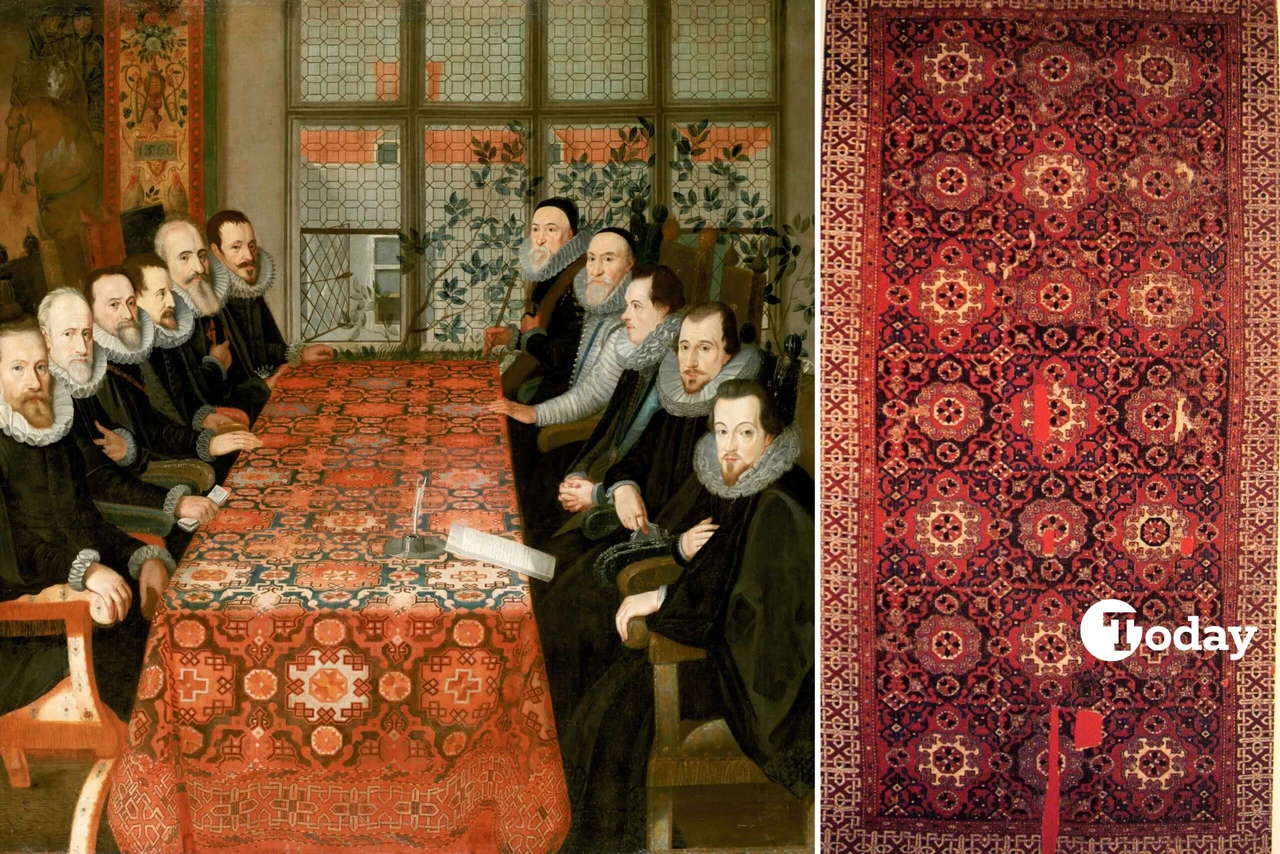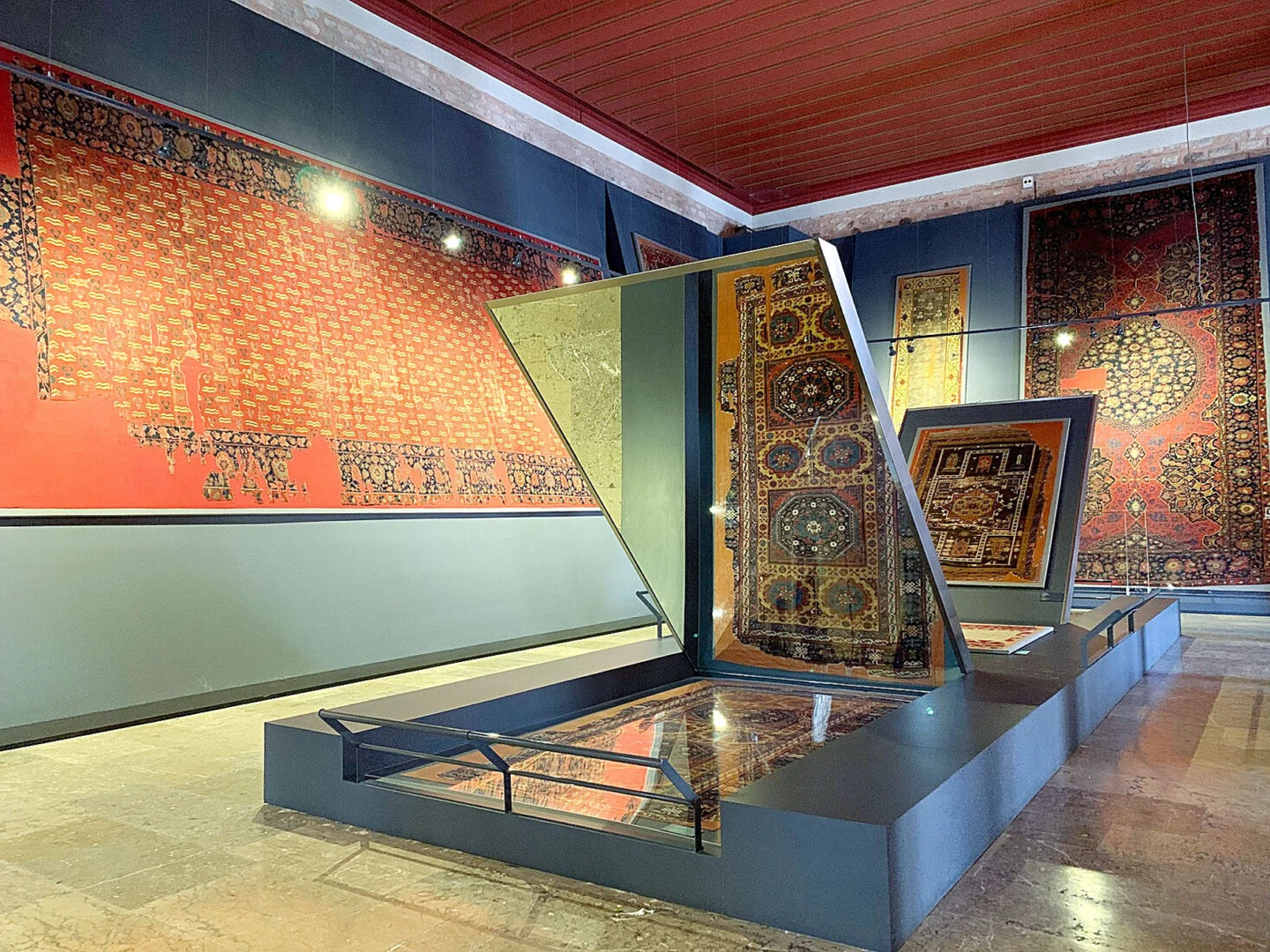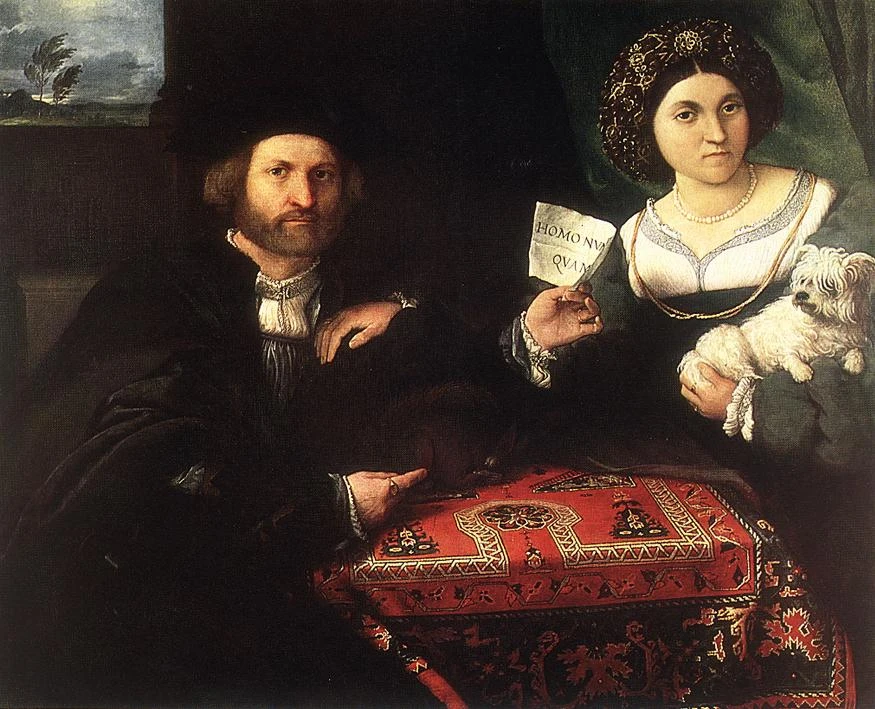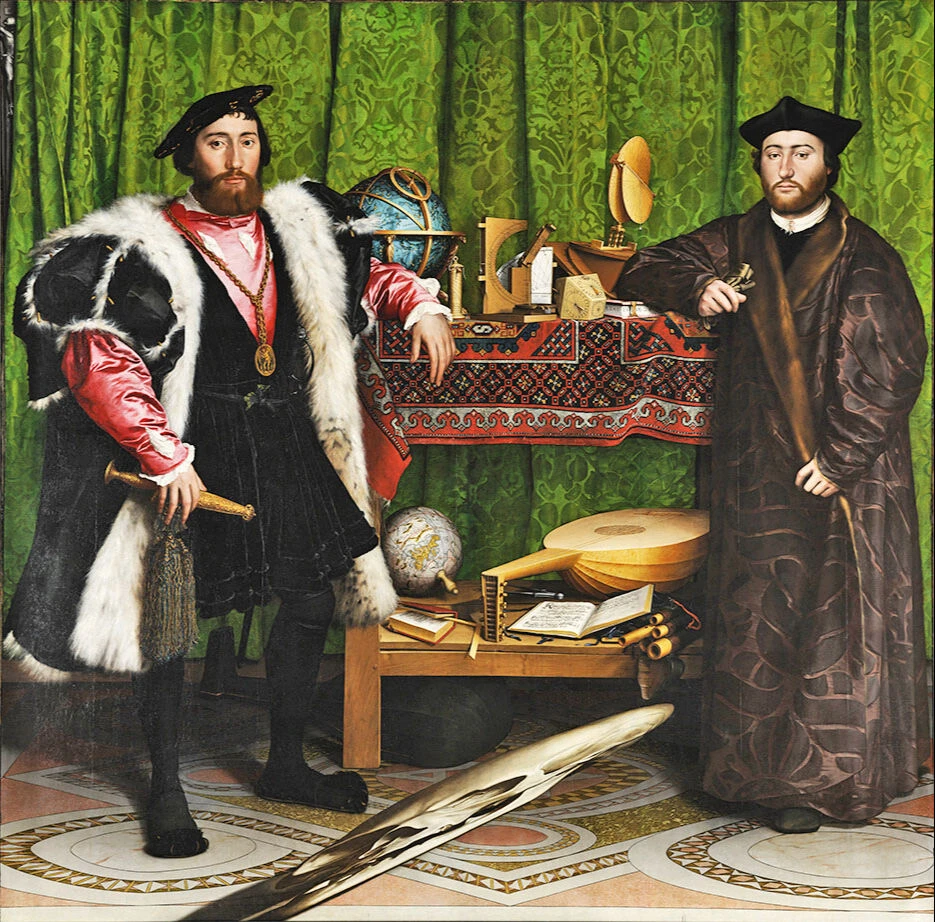European painters’ love for Turkish carpets: Woven with paint, immortalized in art
 Left Image: Unknown painter, The Somerset House Conference, with a small-pattern Holbein carpet; Right Image small-pattern Holbein carpet, Anatolia, 16th century. (Images via Wikimedia)
Left Image: Unknown painter, The Somerset House Conference, with a small-pattern Holbein carpet; Right Image small-pattern Holbein carpet, Anatolia, 16th century. (Images via Wikimedia)
For centuries, the West has shown great interest in many of Anatolia’s “treasures.” These were not limited to archaeological artifacts. The 13th-century traveler Marco Polo once said, “The world’s best carpets are woven in Konya.”
During the Crusades, Europeans encountered Eastern carpets, the likes of which they had never seen before, and they were captivated by them. Among these, Anatolian carpets stood out. Thus, a sort of carpet migration from the East to the West began.
By the 16th century, Turkish carpets had become indispensable elements of European mansions and palaces. Even in England, Anatolian carpets were laid out during church ceremonies.

Turkish carpets more valuable than Renaissance sculptures
Interestingly, in those times, Turkish carpets were sometimes valued more than Renaissance sculptures. Historical records show that Anatolian carpets were more expensive than Donatello’s sculptures.
For instance, a Turkish carpet owned by Italian statesman Lorenzo Medici was worth 70 florins, while Donatello’s bronze statue of Saint John was priced at 50 florins.
Not just for the floor
Carpets did not remain solely on the ground; they became symbols of status and eventually made their way onto the canvases of European painters.
Over the years, Western art—which the Turks would later admire and eagerly imitate—was enriched with the motifs of Turkish carpets. The Islamic influence on Christian art became particularly striking.

Memling, Holbein, Lotto …
Over time, featuring Turkish carpets in works of art became a trend. Interestingly, some types of carpets depicted in European paintings came to be known by the names of the artists who painted them—Memling carpets, Holbein carpets, Lotto carpets, and more.
For example, carpets featuring squares filled with octagons are still referred to as Holbein carpets. This is because the 16th-century German painter Hans Holbein included these carpets in his portraits of nobles. He practically wove carpets with paint, skillfully and intricately depicting them in ways that left viewers in awe. Among his famous works featuring Turkish carpets are “Portrait of the Merchant Georg Gisze,” housed in Berlin’s Staatliche Museen, and “The Ambassadors,” displayed in London’s National Gallery.

Turkish influence in religious paintings
Venetian painter Lorenzo Lotto was another artist who lent his name to Turkish carpets. His works, featuring carpets with intricate botanical motifs originating from the Usak region, gained widespread recognition. Lotto frequently included Anatolian carpets in religious paintings.
Flemish painter Hans Memling, who is said to have influenced Bellini—the artist who painted Sultan Mehmed II—was also among those associated with Turkish carpets. The “Memling carpets” in his works were characterized by hooked octagonal medallions. This hooked medallion design is still known today as the “Memling Rose.”
Additionally, large medallions featuring eight-pointed stars, commonly seen in 15th- 18th-century Anatolian carpets, appeared so frequently in the works of Italian Renaissance painter Carlo Crivelli that they came to be known as “Crivelli carpets.”
Beyond these renowned painters, other artists also included Turkish carpets in their works. A 16th-century Usak carpet appears in Johannes Vermeer’s “The Music Lesson”. In Flemish painter Jan van Eyck’s “Virgin and Child with Canon van der Paele,” a carpet believed to be of Anatolian origin is depicted. Similarly, in Italian painter Domenico Ghirlandaio’s fresco “Saint Jerome,” a Western Anatolian carpet from the Bergama region is prominently featured.



